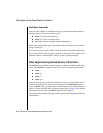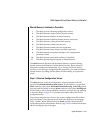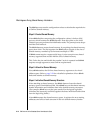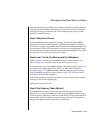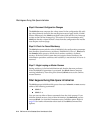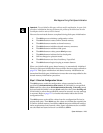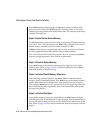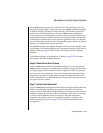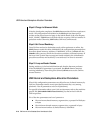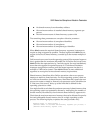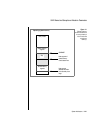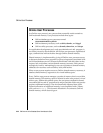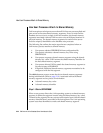
System Architecture 2-17
What Happens During Disk-Space Initialization
Next, tbinit reserves space in the initial chunk of the root dbspace for the
physical and logical logs. As partof thesame step,tbinit updatesthe pointers
in shared memory with the new disk addresses. The daemon repeats this
process for each disk structure. In each pass, tbinit reads configuration
values from its private data space, creates a structure and then updates any
associated structures in shared memory with required address information.
If mirroring is enabled and a mirror chunk is specified for the root dbspace,
space for the mirror chunk is reserved during this process. In this way,shared
memory is initialized structure by structure.
Next, tbinit initializes the tblspace tblspace, which is the first tblspace in the
root dbspace. The tblspace tblspace size is calculated from the size of the root
dbspace. (Refer to page 2-104 for further information about the tblspace
tblspace.)
The database tblspace is initialized next. (Refer to page 2-107 for further
information about the database tblspace.)
Step 6: Wake Parent tbinit Process
After the tbinit daemon builds the database tblspace, it wakes the parent
tbinit process and writes an “initialization complete” message in the OnLine
message log (specified as MSGPATH in the configuration file). The prompt
returns to the user at this point. Any error messages that might have been
passed from the daemon to the parent process are displayed, either at the
UNIX command line or within DB-Monitor. The parent process goes away at
this point. Its role is ended.
Step 7: Initiate First Checkpoint
Next, the tbinit daemon begins the first OnLine checkpoint. Data buffers are
flushed, including the logical log and physical log buffers. The daemon
creates a unique index for the database tblspace on the column that contains
database names and continues with the checkpoint. (The index is used later
to ensure that all database names are unique.) After the checkpoint
completes, the daemon writes a “checkpoint complete” message in the
OnLine message log. (Refer to page 2-70 for further information about
checkpoints.)




